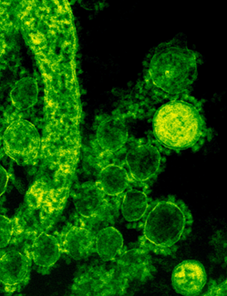Total Coliform / E Coli – Water Management Program
Total coliforms and E. coli are used as indicators to measure the degree of pollution and sanitary quality of drinking water. Human waterborne diseases often result from exposure to water that is contaminated with the feces of warm-blooded animals, including humans. EPA requires that public water systems (PWS) produce and distribute drinking water that is free from fecal contamination. A Federal regulation, the Total Coliform Rule (TCR), requires PWS to monitor for the presence of specific bacterial organisms that serve as indicators of fecal contamination. These indicator organisms are total coliforms (TC) and Escherichia coli (E. coli).
NC State University receives potable water (water meeting criteria for human consumption) from the City of Raleigh E.M. Johnson (EMJ) Water Treatment Plant in Northwest Raleigh. The City of Raleigh, in accordance with federal guidelines, publishes a Consumer Confidence Report that lists the levels of contaminants that have been detected in the municipal water supply, and whether the system meets state and EPA drinking water standards.
What are total coliform bacteria?
Total Coliform bacteria (TC) are a group of bacteria that are regularly present in environmental waters. Fecal coliforms (FC) and E. coli are a sub-group of TC that are more associated with the feces of people and warmblooded animals. FC or E. coli presence can indicate contamination of water supplies resulting in an increased risk of the presence of waterborne pathogens. Bacterial indicators such as TC and E. coli are also valuable indicators of the performance of drinking water treatment processes and distribution system integrity.
Health Effects
Coliform or other bacteria in drinking water will not always cause illness; however, since these bacteria are present, it may indicate that other disease-causing organisms may also be present.
EPA maximum contaminant level goal (MCLG)
EPA set the MCLG for total coliforms at zero. The MCL levels are based on the positive sample tests for total coliforms (monthly MCL), or for total coliforms and Escherichia coli (E. coli) or fecal coliforms (acute MCL).
Coliform Bacteria Frequently Asked Questions
What are Coliform Bacteria and E.Coli?
Coliform bacteria are a large group of bacteria common in soils, plants and animals that indicate potential well contamination and may cause health problems.
Are Coliform Bacteria Harmful?
Most coliform bacteria are not harmful. However, some can make a person sick. A person that has been exposed to these bacteria may have an upset stomach, vomiting, fever, or diarrhea.
How do I know if there are bacteria in the drinking water source in the building on campus?
Testing is the only reliable way to know if drinking water contains bacteria or not.
Can I request a test of coliform bacteria for my building?
The Water Quality Management program includes this test as part of its plan. Please check out the testing website –Water Quality results table for more information.
Additional Information
- https://www.epa.gov/dwreginfo/revised-total-coliform-rule-and-total-coliform-rule
- https://www.epa.gov/dwreginfo/total-coliform-rule-compliance-help-public-water-systems
- https://www.epa.gov/region8-waterops/addressing-total-coliform-positive-or-e-coli-positive-sample-results-epa-region-8
- https://www.cdc.gov/healthywater/drinking/private/wells/testing.html
